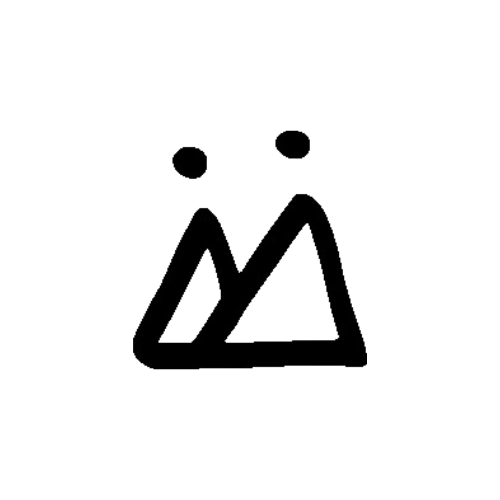What is Samhain?
Samhain (pronounced "Sow-in") is an ancient Celtic festival marking the end of the harvest season and the beginning of winter, traditionally celebrated on the night of October 31st through November 1st.
It is considered the Celtic New Year and represents a time when the veil between the physical world and the spiritual realm is believed to be at its thinnest, allowing for communication with ancestors and spirits.
When is it celebrated?
Samhain is typically celebrated from the evening of October 31st until sunset on November 1st.
This date marks the halfway point between the Autumn Equinox and the Winter Solstice.
Why is it called Halloween too?
Samhain influenced the Christian festival of All Hallows' Eve, which eventually became Halloween.
When Christianity spread, church authorities aimed to replace pagan holidays with Christian ones.
They designated November 1st as All Saints’ Day (or All Hallows’ Day), making October 31st All Hallows’ Eve, which later evolved into Halloween.
Many of the customs associated with Halloween, like wearing costumes and carving pumpkins, have their roots in the traditions of Samhain.
History of Samhain
Samhain has its origins in ancient Celtic society, particularly among the Gaels of Ireland, Scotland, and the Isle of Man.
It was a key part of the agricultural cycle, marking the end of the harvest and the beginning of the darker half of the year.
During this time, livestock were brought in from pastures, crops were harvested, and preparations were made for the long winter months.
In addition to its agricultural significance, Samhain was seen as a time when the boundary between the living and the dead became thinner.
People would light bonfires to guide spirits and protect against harmful entities, candles to light the way of those past. It was also a time for divination and rituals.
Who Celebrates Samhain?
Samhain is celebrated by modern Pagans, especially Wiccans and Druids, as well as people of Celtic descent who wish to honor their ancestral traditions.
While it originated in Celtic culture, it has been embraced by a wider groups of people interested in the spiritual and historical significance of the holiday, the lunar cycle, and cyclical living.
What is the Symbolism of Samhain?
Endings and New Beginnings: Samhain is a time to reflect on the past year, acknowledge any endings or losses, and prepare for new beginnings.
Death and Rebirth: The dying of the light (shorter days) symbolizes death, while the return of the sun after winter represents rebirth.
The Veil Between Worlds: The thinning of the veil between the physical and spiritual worlds allows for connection with ancestors and spirits.
Harvest and Survival: Symbolically, it represents gathering resources (physical, emotional, and spiritual) for the challenges of the winter season ahead.
Rituals of Samhain
Bonfires: Traditionally, large bonfires were lit to ward off evil spirits and to cleanse and purify the community.
Feasts: Families would prepare large meals, often leaving an empty place at the table for deceased loved ones to symbolically invite their presence.
Divination: Samhain is associated with fortune-telling practices such as reading tarot cards, casting runes, or scrying.
Offerings: People often leave offerings of food, drink, or small tokens at altars or outdoors to honor ancestors and nature spirits.
Costumes and Masks: Historically, people wore costumes to disguise themselves from malevolent spirits, a tradition that evolved into modern Halloween costumes.
Mantras for Samhain
Mantras or chants can help create a focused atmosphere during Samhain rituals. Some examples include:
“I honor the cycle of death and rebirth.”
“As the veil thins, I invite guidance from my ancestors.”
“I release what no longer serves me, and embrace transformation.”
“I welcome the wisdom of the dark and the light.”
Endings and New Beginnings and Samhain
Samhain is a powerful time to recognize endings and celebrate the potential of new beginnings.
As the old year dies, we can release old habits, relationships, or mindsets that no longer serve us.
It's a time to reflect on the lessons learned from the past year and to set intentions for renewal and transformation in the coming year.
Honouring Our Ancestors
Honoring ancestors is a central part of Samhain celebrations.
This can be done by setting up an ancestral altar with photographs, personal items, or symbolic offerings. You might light a candle in their honour, speak their names, and tell their stories.
Rituals of gratitude and remembrance help to connect with their wisdom and guidance.
Rest During Samhain
As the days grow shorter and nature prepares for winter, Samhain invites us to slow down and rest.
This period of introspection allows for personal growth and the integration of lessons from the past.
Rest is not just physical but also emotional and spiritual.
Meditation During Samhain
Meditation during Samhain can focus on connecting with the ancestors, exploring the themes of life and death, or simply resting in stillness.
You might meditate in front of an altar, visualize a loved one or ancestor offering guidance, or use breathwork to calm the mind and tune in to the energy of the season.
Visualization exercises, such as imagining a thinning veil or a journey into the underworld, can also be a powerful way to engage with Samhain’s spiritual depth.
Samhain Sunday
On Sunday 27th October, we held a special Samhain Sunday workshop at the studio, exploring ritual and rest. Thank you so much to everyone who joined us.
You might like to listen to the Samhain Sunday playlist from the workshop. Just click here.
Samhain Blessings, Friends!







